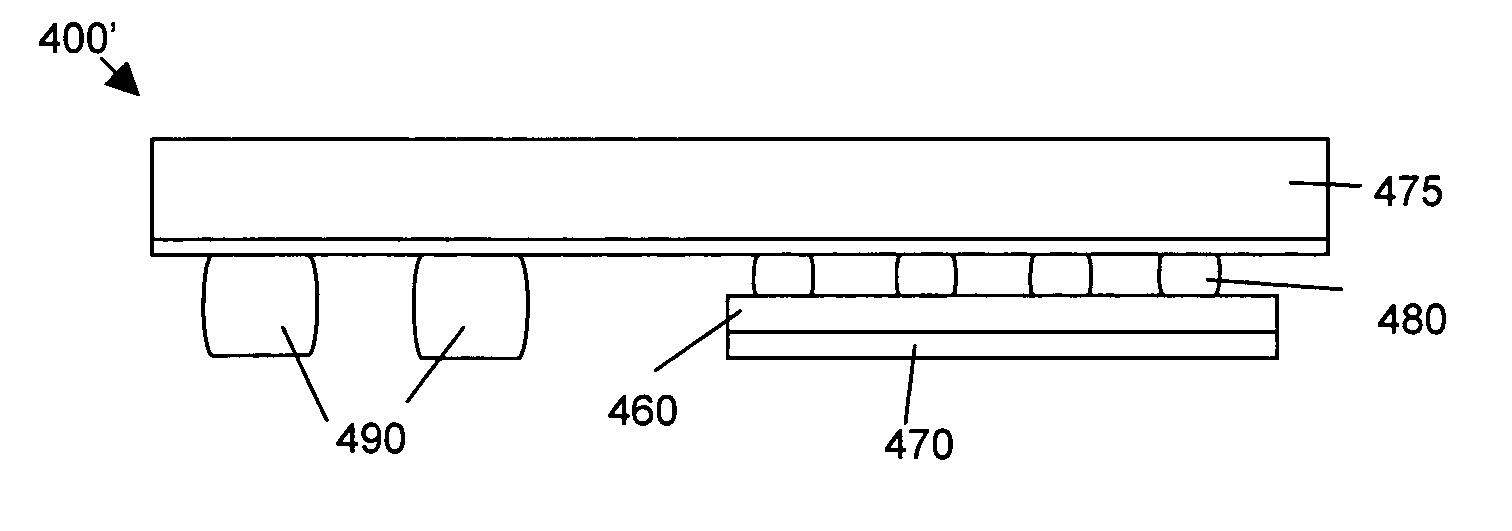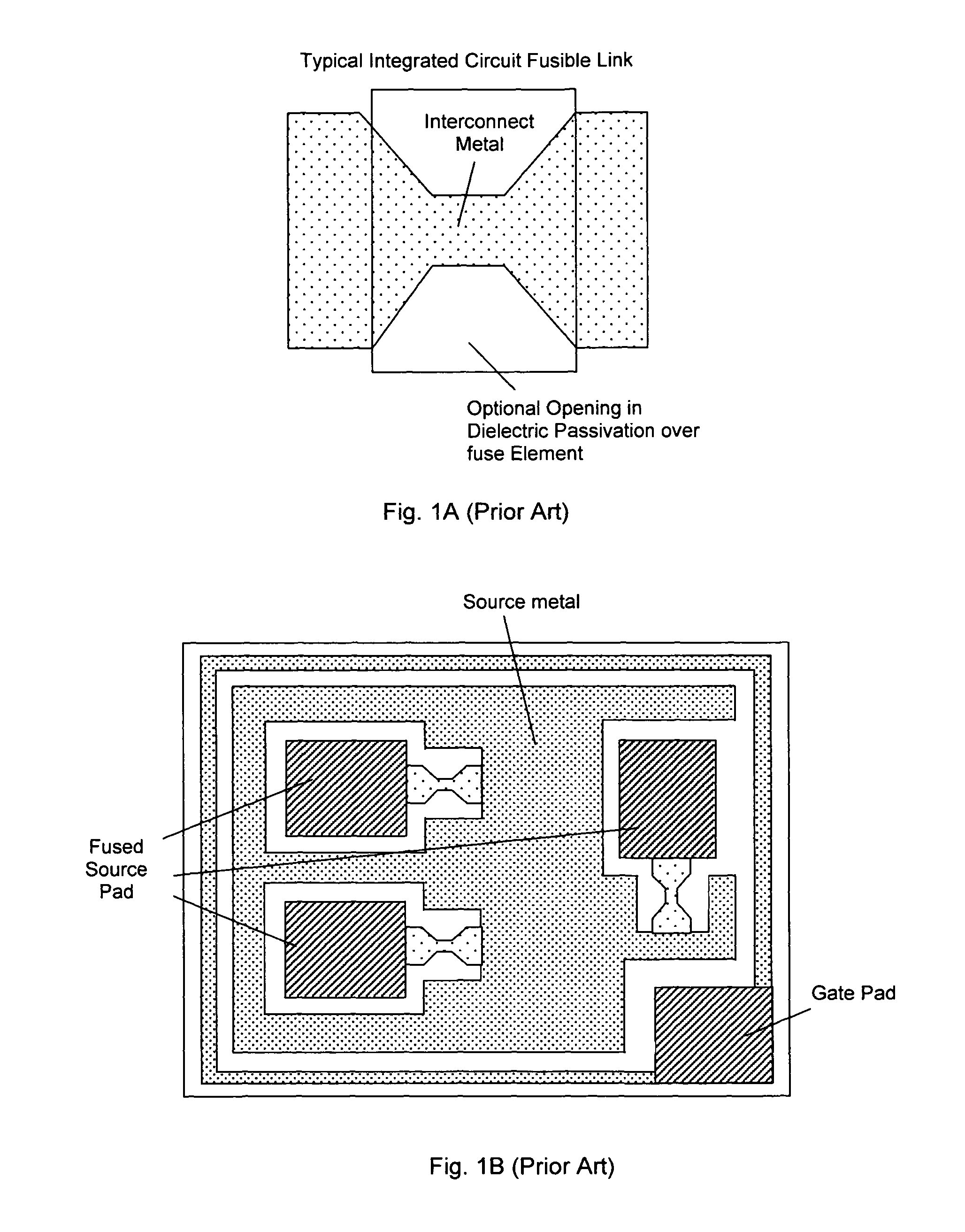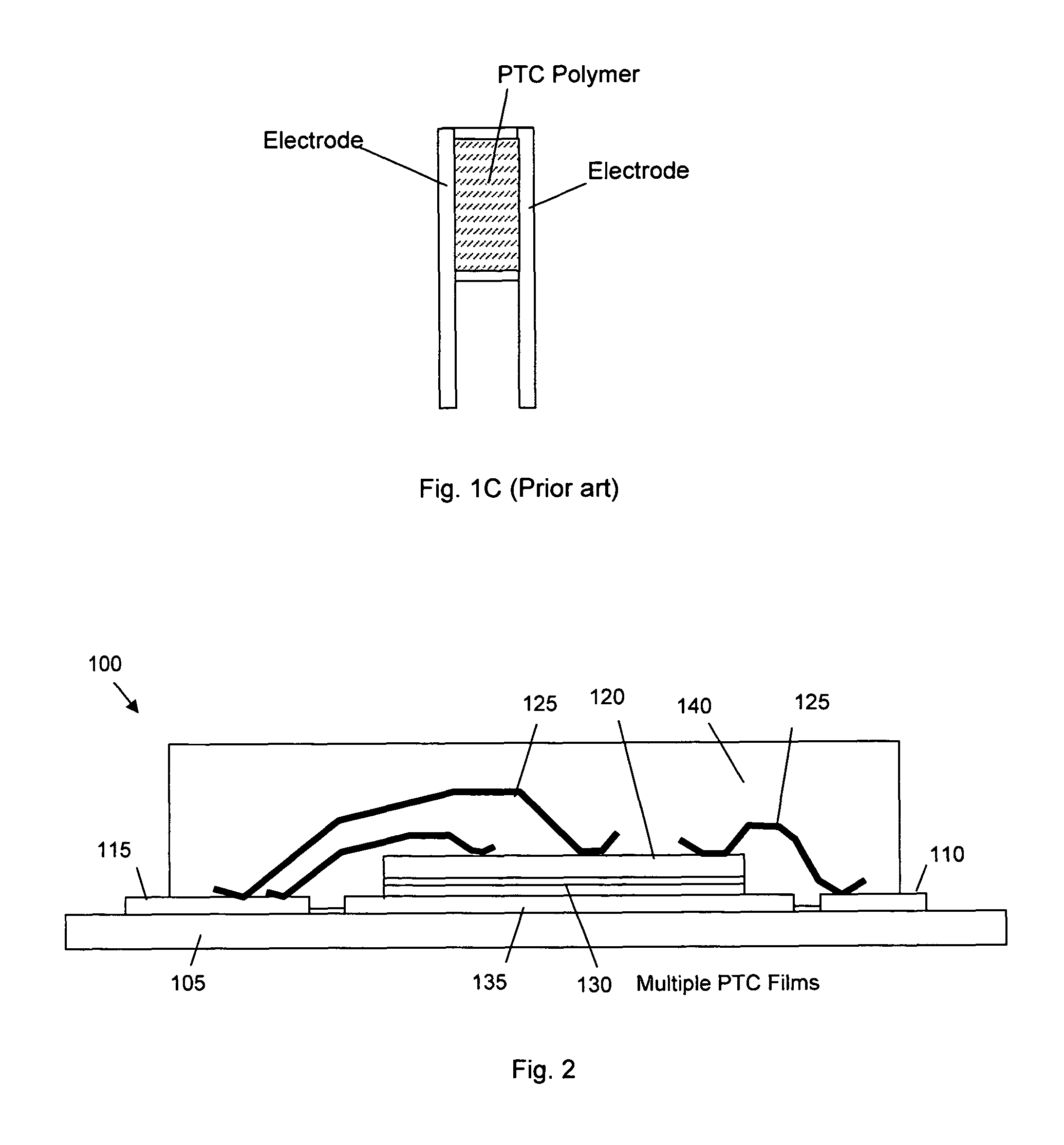Structure and method for self protection of power device
a technology of power devices and structures, applied in the direction of semiconductor devices, semiconductor/solid-state device details, electrical apparatus, etc., can solve the problems of unfavorable cost impact in manufacturing and operation, increase in die size, and damage to other components
- Summary
- Abstract
- Description
- Claims
- Application Information
AI Technical Summary
Benefits of technology
Problems solved by technology
Method used
Image
Examples
Embodiment Construction
[0022]Referring to FIG. 2 for a side cross-sectional view of a new and improved packaging configuration of a semiconductor power device 100, e.g., a standard vertical DMOS power MOSFET mounted on a printed circuit board (PCB) 105. The PCB 105 supports a leadframe includes a gate terminal 110 on the right for connecting to a gate pad (not specifically shown) on the chip 120 and the leadframe includes a source terminal 115 on the left for connecting to a source metal (not specifically) on the chip 120. The connections between the terminals 110 and 115 to the chip 120 are through the bond wires 125. The chip 120, e.g., the power MOSFET, having a drain on the bottom is disposed on a positive temperature coefficient (PTC) layer 130 for connecting to a die pad 135 in the center functioning as a drain lead. The whole package is then contained and protected in a molding compound 140.
[0023]The connections between the MOSFET chip 120, the PTC layer 130 and the die pad may be facilitated by so...
PUM
 Login to View More
Login to View More Abstract
Description
Claims
Application Information
 Login to View More
Login to View More - R&D
- Intellectual Property
- Life Sciences
- Materials
- Tech Scout
- Unparalleled Data Quality
- Higher Quality Content
- 60% Fewer Hallucinations
Browse by: Latest US Patents, China's latest patents, Technical Efficacy Thesaurus, Application Domain, Technology Topic, Popular Technical Reports.
© 2025 PatSnap. All rights reserved.Legal|Privacy policy|Modern Slavery Act Transparency Statement|Sitemap|About US| Contact US: help@patsnap.com



